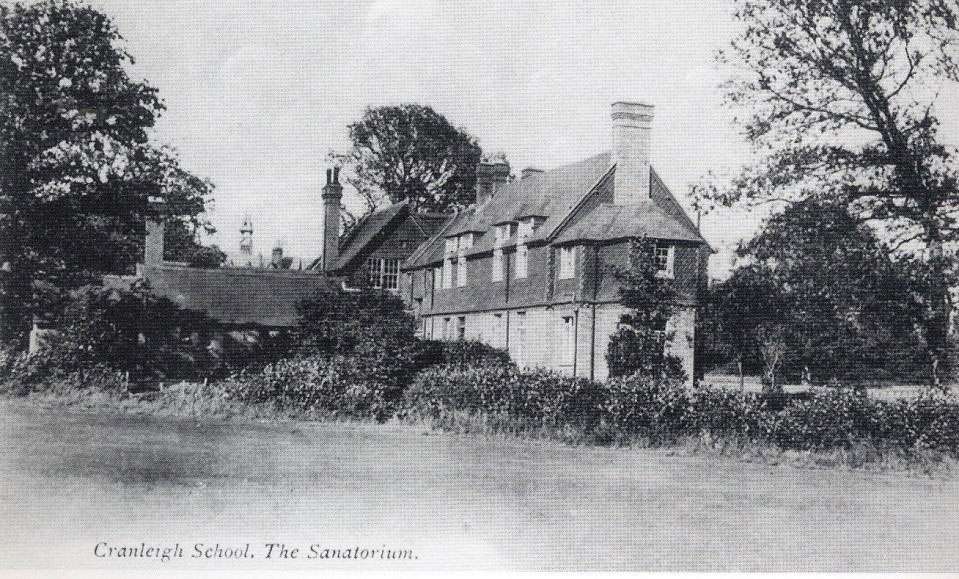
Cranleigh School’s sanatorium, which could not cope with the number of Spanish Flu victims
Ruth and Chris Cheesman of Victoria Road received further news from their prisoner-of-war son Joe, who had been suffering from a bad foot for some months. ‘I came out of hospital a week ago, after a month of it,’ he wrote, ‘but was sorry really, as I was better off in there than in the camp. The food was better, and of course you had no navvying [labouring] to do. We are in a big camp now. There are about 1,200 of us together. We keep getting exciting rumours about the fighting, but we don’t know what to believe. We keep smiling. If you were here sometimes and heard the singing at nights you wouldn’t think we were prisoners, but at other times we know it with a vengeance.’
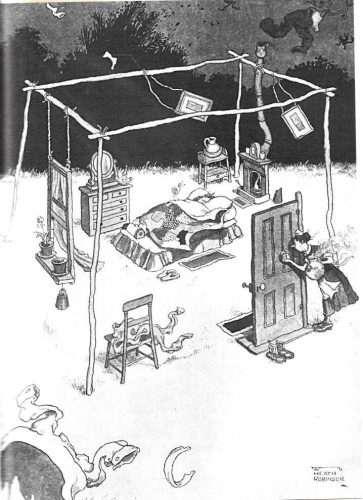
How to deal with Spanish Influenza by Cranleigh’s William Heath Robinson
By October 1918, hopes were high in Cranleigh for a speedy end to the war. On October 2nd, the Surrey Advertiser wrote: ‘The news from all fronts, so wonderfully and consistently good, has been capped by Bulgaria’s complete collapse and unconditional surrender…the joy bells are ringing in our hearts’.
Nevertheless, men were still dying on the Western Front, and on October 7th, the newspaper published a lengthy list of recent local casualties.
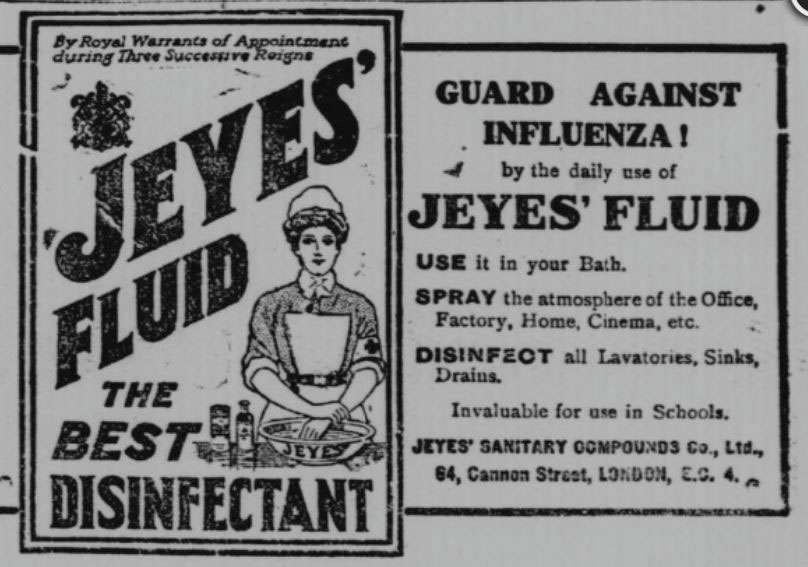
Advert in the Surrey Mirror of November 22nd
However, a new threat had arisen. Under the heading ‘Influenza in Surrey: A Widespread Epidemic’, the Surrey Advertiser reported, ‘So far, there have been comparatively few deaths among the civil population, but in the camps, it is a different matter…there are victims by their hundreds’. Mrs Ruth Cheesman wrote to Joe at the end of October, ‘There is a lot of illness in Cranleigh. Influenza going about. Hope we shall avoid it.’
At Cranleigh School, the school magazine reported, ‘The flu came with great suddenness, and within a few days some 260 boys were in bed’. It must have been a nightmare for the staff. Fortunately it proved to be a mild strain, but the boys were sent home and the main school was closed for two weeks to be thoroughly cleaned.

Mrs Alice Nightingale’s death certificate
There was nothing ‘Spanish’ about the flu epidemic. Most of the countries of Europe had strict wartime control of the news that was printed. Spain, however, being neutral, published details of the number of its victims, and it was initially thought that the disease had originated here. In fact, the first recorded case was in a US army camp in Kansas, and soldiers brought it to the trenches of the Western Front. It killed between 50 and 100 million people worldwide, and particularly attacked people in their twenties and thirties.
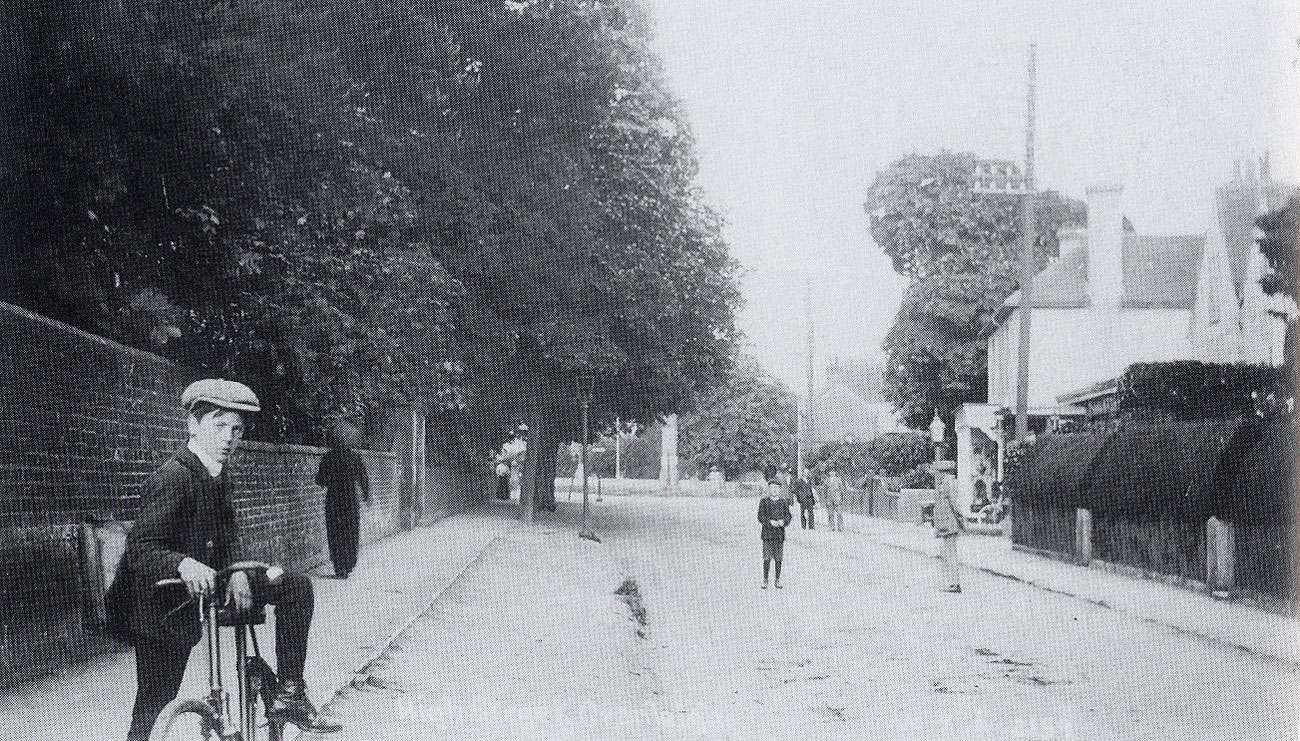
Nightingale’s furniture shop is the white building on the right. The hospital extension has taken its place.
Precise details about the impact of the epidemic here are not easy to come by. The parish register of burials does not give the cause of death and does not seem to have many more entries than usual. The Village Hospital annual report is no help either. However, we do know of six victims (verified by their death certificates), and there may well have been more.
Mrs Alice Nightingale, aged 38, wife of Jabez Nightingale, died on November 19th, at her husband’s furniture shop in the High Street. The Baptist Church sent condolences to him from the church members’ meeting.
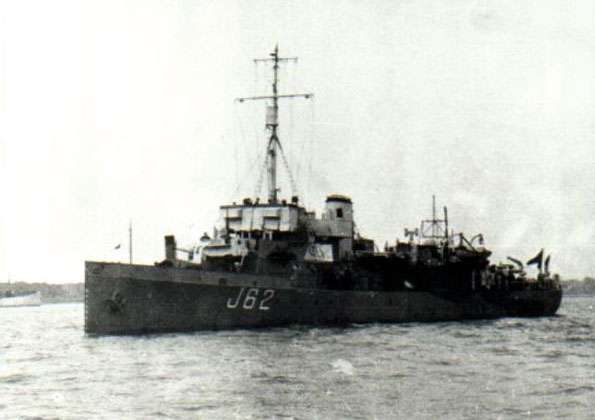
A Hunt class minesweeper of 1918 of the same type as HMS Shrewsbury
Mrs Florence Parsons of The Mount was 31 when she died of influenza, leaving two young daughters aged 10 and 8. Her husband, Thomas, was away in the Navy, serving as a Gunner on HMS Shrewsbury.
Dorothy Mandell-Hall died at the age of 24 at Oliver House (recently the Cranleigh Village Hospital shop) on December 6th. She was the manageress of the railway station bookstall.
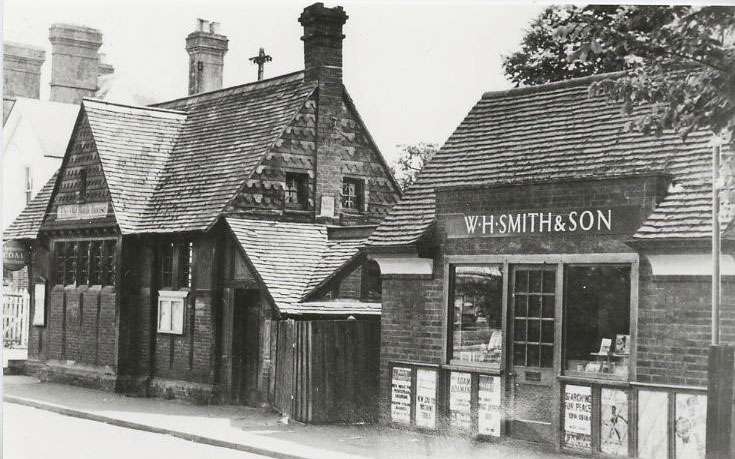
W H Smith’s paper shop at the Railway Station
Particularly tragic were the deaths from influenza of three Gamblin brothers, all farmworkers living at Rye Cottage, who died on successive days in 1919. Two of their brothers, Walter (33) and Ernest (18), had died in the Dardanelles and on the Somme respectively, and are named on the Cranleigh War Memorial. Now John (18) died of influenza at Underslaugh Farm, his sister’s home, on March 5th 1919, followed the next day by William (27) and on March 7th by Henry (25), both of whom died in the Hambledon Workhouse infirmary. Because these two had served in the Army, and died before August 31st 1921, they were entitled to a Commonwealth War Grave in Cranleigh cemetery and are buried together, though they are not recorded on the War Memorial. John is buried separately.
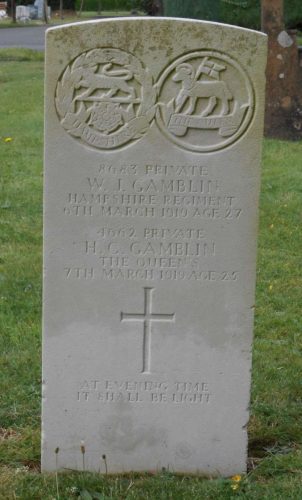
The Commonwealth War Grave of William and Henry Gamblin in Cranleigh cemetery
The Cranleigh History Society meets on the 2nd Thursday of each month at 8.00pm in the Band Room. The next meeting will be on Thursday October 11th, when Brian Freeland will speak on ‘Women of the Raj’.











